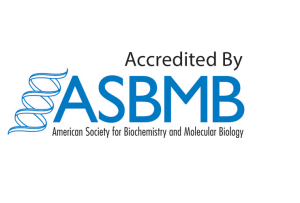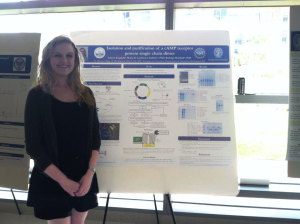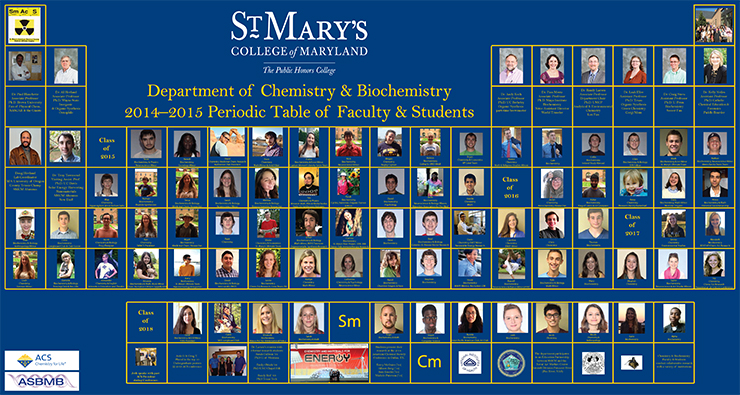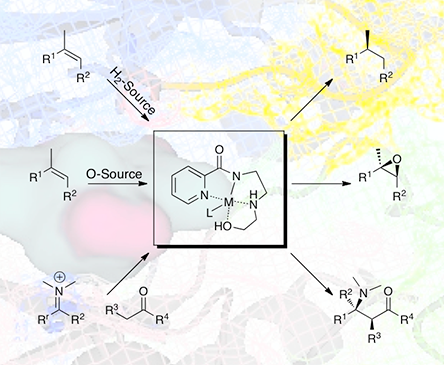https://www.smcm.edu/news/2016/09/student-nicolette-coluzzi-professor-randy-larsen-publish-international-journal-conservation-science/
Chemistry Department at St. Mary’s College Publish in Journal of Chemical Education
https://www.smcm.edu/news/2016/09/chemistry-department-st-marys-college-publish-journal-chemical-education/
Biochemistry Program at St. Mary’s College Earns Accreditation from ASBMB
The Department of Chemistry and Biochemistry at St. Mary’s College of Maryland announced that its biochemistry program has received accreditation from the American Society for Biochemistry and Molecular Biology through 2023. Current students enrolled in the program can participate in the 2016 ASBMB certification exam this April. St. Mary’s College is the first public institution in Maryland to receive this prestigious accreditation, and one of about fifty schools in the country holding the designation.
The ASBMB received a National Science Foundation grant in 2010 to develop the accreditation standards. The ASBMB Degree Accreditation Program is designed to recognize undergraduate biochemistry and molecular biology programs whose “features and infrastructure meet the standards set forth by the ASBMB.” Students at accredited schools can obtain a certified degree by exhibiting satisfactory performance on a national exam administered by the organization. This evaluation instrument gives students an independently constructed and scored tool for assessing their level of achievement and the program’s effectiveness. It is also an important way to demonstrate their competitiveness with peers from across the nation when applying for graduate programs, professional programs and jobs.
“We are really excited and proud to have earned this accreditation,” said Pamela S. Mertz, associate professor of chemistry and biochemistry. “Our chemistry program has been accredited by the American Chemical Society since 2003. This new accreditation makes it clear that both St. Mary’s chemistry and biochemistry programs fulfill or exceed national standards.”
The application for accreditation, which Mertz describes as “massive,” evaluates more than a college’s curricular offerings. “They asked about research opportunities, diversity, instrumentation, how we teach our labs, and much more,” Mertz recalled. She was pleased to see that in the acceptance letter the association lauded the school for having “excellent faculty, who are outstanding in teaching and research, and a rich interdisciplinary curriculum with inquiry components woven throughout.”
As the ASBMB notes on its website, “biochemistry and molecular biology are distinguished by their focus on information flow, structure, function and mechanism within overarching biological contexts.” Now that the St. Mary’s program is accredited, the ASBMB encourages the college to “actively and visibly promote the excellence and innovation in undergraduate biochemistry and molecular biology education symbolized by the accreditation.” Mertz states that the accreditation may help recruit new students to the program and will provide the school with important assessment feedback about how to continuously improve the program in the future.
More information:
St. Mary’s College, NAWCAD Collaboration to Expand Beyond Physics
The unique collaboration between St. Mary’s College of Maryland Department of Physics and the Naval Air Warfare Center Aircraft Division (NAWCAD) is expanding to two additional academic departments, chemistry and mathematics, at the public honors college.
Funding to support the expansion comes from The Patuxent Partnership (TPP), which will contribute to St. Mary’s College $180,000 of its recent award of $850,000 from the Office of Naval Research. The contribution is part of TPP’s new “STEM for all” initiative aligning with the organization’s mission to collaborate with government, industry and academia on initiatives in science and technology and to support workforce development.
Since 2003, NAWCAD and the physics department at St. Mary’s College have collaborated under the direction of physicist Frank Narducci, of the Patuxent River Naval Air Station. Expanding the collaboration to chemistry and mathematics is a welcome addition.
Randolph Larsen, associate professor and chair of the Department of Chemistry and Biochemistry at St. Mary’s College, says, “This funding will help us increase our research efforts in the fields of materials science and fuels analysis.”
The collaboration model allows St. Mary’s College students and recent graduates to develop familiarity with Navy practices and programs and gain six months or more of training and experience.
The funding will be used over a three-year period.
Associate Professor Andrew Koch Receives 2015 Braude Award
Andrew Koch, associate professor of chemistry, is the recipient of the 2015 Braude Award by the Maryland Section of the American Chemical Society. Continue Reading on the SMCM NewsRoom
New Research Puts Us Closer To DIY Spray-On Solar Cell Technology
https://www.smcm.edu/news/2015/10/new-research-puts-us-closer-to-diy-spray-on-solar-cell-technology/
The American Chemical Society SMCM Student Chapter Awarded Travel Grant
The SMCM student chapter of the American Chemical Society has been awarded a National Meeting Travel Grant for the 249th National Meeting in Denver, CO.
Students excel through the Research Experiences for Undergraduates Program

Each year St. Mary’s offers to sophomores and juniors a six week research experience in mathematics. The Research Experiences for Undergraduates (REU) Program is a paid summer internship that allows students to perform more focused research in their areas of interest.
This year chemistry student David Darby ’15 investigated protein-protein interactions at the University of Utah. He aimed to identify and create drugs to address new pharmaceutical targets. Ashton Engdahl ’15 worked at Georgetown University to express and purify a protein which can be used to learn more about the fundamental ways in which proteins react and communicate.
Meet the 2014-2015 Chemistry and Biochemistry Department!

A new academic year, a new group of dedicated chemistry students and their accomplished professors.
Prof. Craig Streu Nets $55,000 Research Grant
Many pharmaceuticals, biomolecules, and even insecticides posses a special property that chemists refer to as chirality. In general, chirality arises from the spatial arrangement of atoms in otherwise identical molecules. Hands, for example, are excellent examples of chirality. While each hand contains five digits that resemble those on the opposite hand, the left and right hands are not identical in three-dimensional space; in fact, they are mirror images. The significance of this difference is easily illustrated by attempting to place a glove on the wrong hand.
Two chiral molecules, while identical in every way except three-dimensional organization, can have very different properties. As a result, chemists have expended tremendous effort developing methods to control chirality. One particularly promising approach for controlling chirality is the use of catalysts that pass their chirality on to their products. Professor Streu has developed an exciting set of compounds that his research group is testing for just this purpose. Based upon their initial findings, his group was recently awarded a $55,000 Petroleum Research Fund grant from the American Chemical Society to support summer undergraduate researchers for the next two years, as well as chemicals and supplies.

